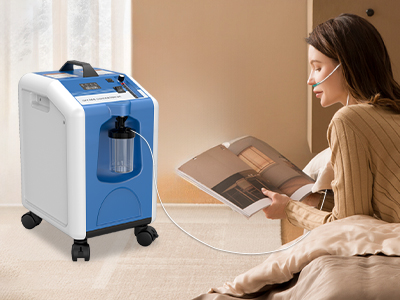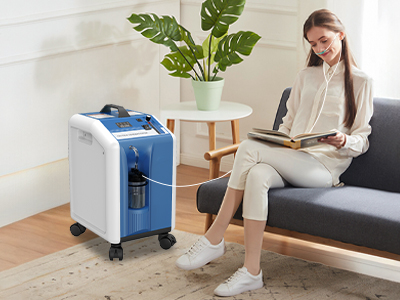05 Feb 2024
Oxygen concentrators have become indispensable medical devices, offering a reliable source of concentrated oxygen for individuals with respiratory conditions.
Among the frequently asked questions, the safety of using oxygen concentrators in enclosed spaces stands out. This article aims to dissect this concern, providing a comprehensive guide to ensure safe usage.

Understanding Oxygen Concentrators
A. Mechanism of Oxygen Concentration
At the heart of an oxygen concentrator is a sophisticated mechanism that extracts ambient air, separates nitrogen, and delivers purified oxygen. Understanding this process forms the foundation of assessing safety.
B. Components and Features
Modern oxygen concentrators come equipped with an array of safety features. From oxygen sensors to alarms, these components are designed to enhance the device's safety profile.
Ventilation in Closed Spaces
A. Importance of Adequate Ventilation
Ventilation is pivotal in dissipating excess oxygen and maintaining a healthy air composition. The significance of proper air circulation cannot be overstated.
B. Factors Influencing Ventilation
Room size, airflow patterns, and external factors contribute to ventilation. Each of these variables must be considered to determine the safety of using an oxygen concentrator in a specific environment.
Safety Guidelines for Oxygen Concentrator Usage
A. Manufacturer Recommendations
Manufacturers provide specific guidelines for the safe use of their oxygen concentrators. Adhering to these recommendations is paramount to ensuring safety during usage.
Flexibility in Equipment
The size of the room plays a crucial role. Smaller rooms may experience a more significant impact on oxygen levels, necessitating careful consideration before using a concentrator.

Potential Risks of Using Oxygen Concentrators in Closed Rooms
A. Oxygen Enrichment Risks
While oxygen concentrators are designed to deliver precise levels of oxygen, there's a potential risk of oxygen enrichment in closed spaces, leading to unintended high oxygen levels.
B. Fire Hazards
Oxygen supports combustion, and in certain conditions, there's a risk of fire associated with oxygen concentrator use. Understanding these risks is vital for safe usage.
Ensuring Safety: Practical Tips
A. Room Preparation
Preparing the room for oxygen concentrator use involves simple yet effective steps. Ensuring proper ventilation and removing potential fire hazards are part of a safety-oriented room setup.
B. Monitoring Oxygen Levels
Regularly monitoring oxygen levels in the room provides real-time data on concentration. This proactive approach helps prevent potential risks associated with oxygen enrichment.
Common Myths and Clarifications
A. Dispelling Misconceptions
There are misconceptions surrounding the safety of oxygen concentrators. Addressing these myths with factual information is crucial for ensuring accurate knowledge among users.
B. Safety Assurance Technologies
Innovation in oxygen concentrator technology includes safety features that actively monitor and regulate oxygen delivery. These technologies provide an additional layer of safety.
Conclusion
In conclusion, while oxygen concentrators offer unparalleled convenience, safety should always be prioritized. Achieving a balance between these factors ensures that individuals can benefit from these devices without compromising their well-being.
Keywords: oxygen concentrator
Originally published 05 Feb 2024, updated 05 Feb 2024.